In LED strip lighting projects, the choice of an aluminum profile influences not only installation convenience but also thermal performance, light quality, and service life. For example, 6063-T5 aluminum—commonly used in LED profiles—has a thermal conductivity of around 201 W/(m·K), more than 1,000× higher than most plastics, allowing it to quickly transfer the 8–10 W of heat generated per meter by a high-power (15 W/m) LED strip. Without proper dissipation, this heat can push PCB temperatures above 80 °C, leading to lumen depreciation, color shift, and lifespan reduction of up to 50%.
Diffuser selection plays an equally important role: a poorly matched diffuser can cause glare, uneven light, or reduced output, undermining design intent.
For a complete breakdown of profile categories, performance characteristics, and use cases, see our Ultimate Guide on Aluminum Profile for LED Strip Lighting. In this guide, we focus on heat dissipation and aesthetic design, providing practical selection criteria for lighting designers, contractors, and OEM buyers who want maximum LED reliability with a clean, professional finish.
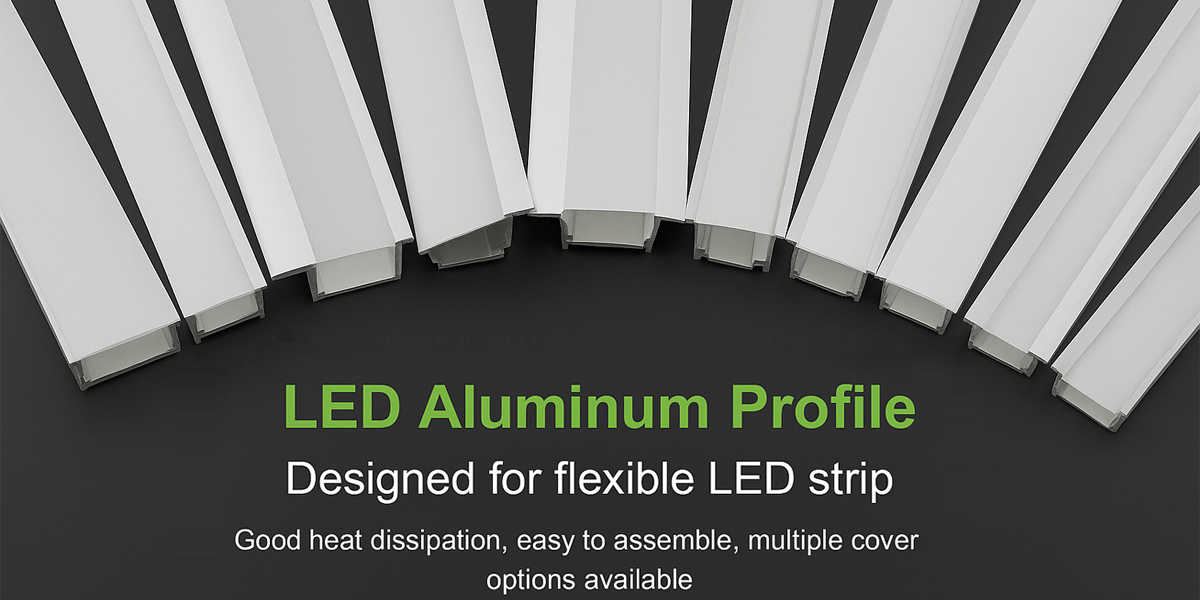
LED Strip Heat Issues
Heat is an unavoidable byproduct of LED strip operation, and its impact becomes more critical in high-power models (10–20 W/m). Only about 25–35% of the input energy is converted into light—the rest becomes heat. For example, a 15 W/m LED strip generates approximately 10 W/m of thermal load, which, if unmanaged, can push PCB temperatures beyond 80 °C. This can accelerate lumen depreciation, cause noticeable color shift, and shorten service life by up to 50%.
The main factors contributing to excessive heat build-up include:
Inadequate thermal mass or conduction – Profiles made from low-grade aluminum or with thin walls (< 1 mm) transfer heat less effectively. Using 6063-T5 aluminum (≈ 201 W/m·K thermal conductivity) significantly improves heat transfer efficiency.
Installation environment constraints – Enclosed coves, sealed showcases, or high ambient temperatures (> 35 °C) can reduce heat dissipation by 20–30% compared to open, ventilated installations.
High-power continuous operation – Running strips at full brightness for extended periods without a deep or finned LED heat sink extrusion can lead to unstable junction temperatures.
Effective thermal design means selecting a profile that matches strip wattage, physical dimensions, and environmental conditions. For a detailed breakdown of channel types, widths, and cooling performance, see our LED Tape Light Channels Complete Guide.
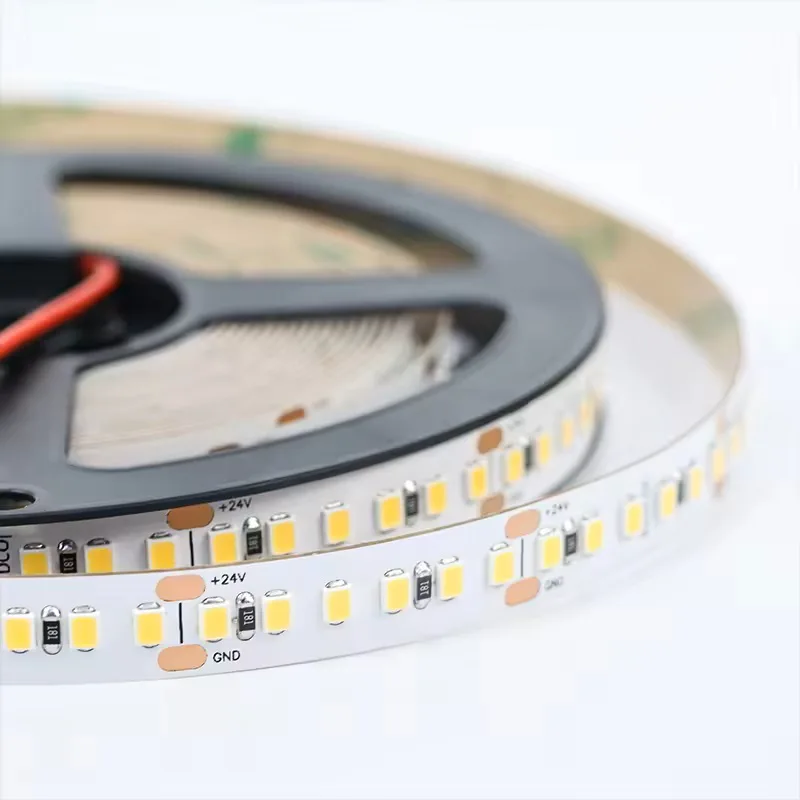
SMD2835 LED Strip Light
LED QTY per Meter Option: 60/72/120/128/140
PCB Width Option: 6mm/8mm/10mm
Color Option: 2700K-6500K
CRI Option: 80/90/95
Input Voltage: DC12V/DC24V
Power per Meter: 6W/8W/9.6W/12W/14.4W/19.2W
Efficiency: 100–200 lumen/watt
Heat Dissipation in Aluminum Profiles
Aluminum profiles serve as passive heat sinks, transferring thermal energy from the LED PCB into the surrounding air. The efficiency of this process can be measured by the temperature drop achieved under continuous operation. For instance, upgrading from a 1 mm thin-wall profile to a 2 mm thick-wall 6063-T5 aluminum profile can reduce LED PCB temperature by 6–8 °C at 15 W/m load—enough to extend L70 lifespan by 30–40%.
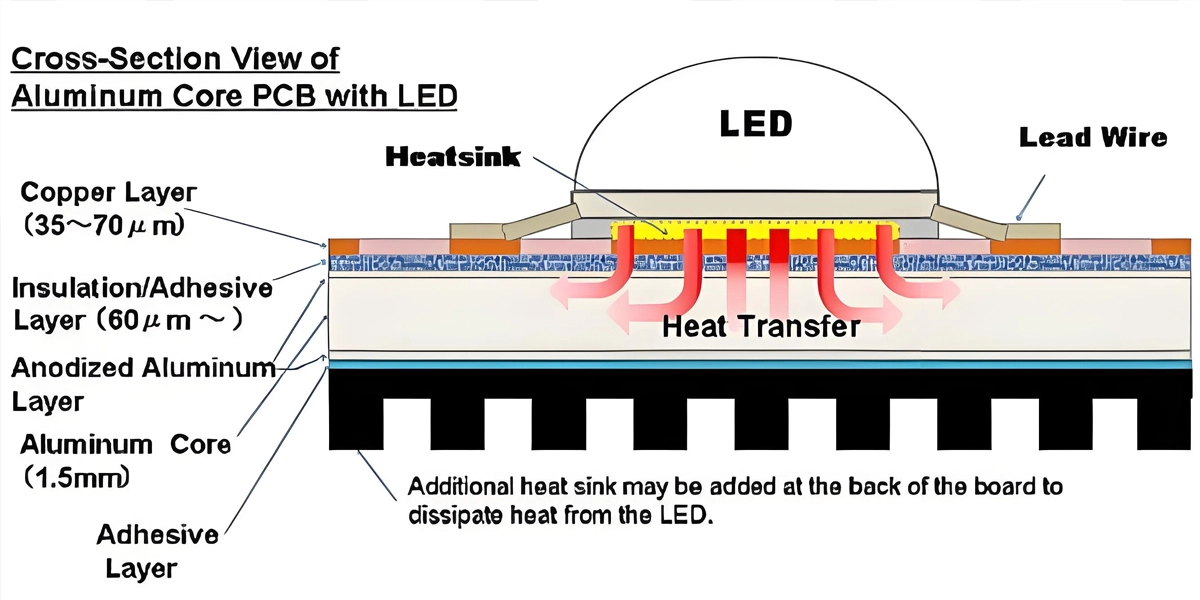
Key parameters affecting dissipation:
Wall thickness – A thicker cross-section increases thermal mass. 2 mm or more is recommended for strips ≥ 15 W/m.
Surface area enhancement – Finned profiles can improve convective heat transfer by 20–30% compared to flat designs.
Material grade – 6063-T5 alloy (≈ 201 W/m·K) is standard; avoid low-grade recycled aluminum (< 150 W/m·K) which impairs conduction.
Mounting interface – Direct attachment to metal surfaces can improve dissipation by up to 15%, while insulating surfaces (wood/plastic) may reduce it by 10–20% unless thermal pads are used.
For high-density LED strips in retail displays, refrigerated showcases, or architectural facade lighting, consider deep-channel or multi-fin extrusions for optimal thermal stability. Detailed product options can be found in our Aluminum Profile for LED Strip Lighting.
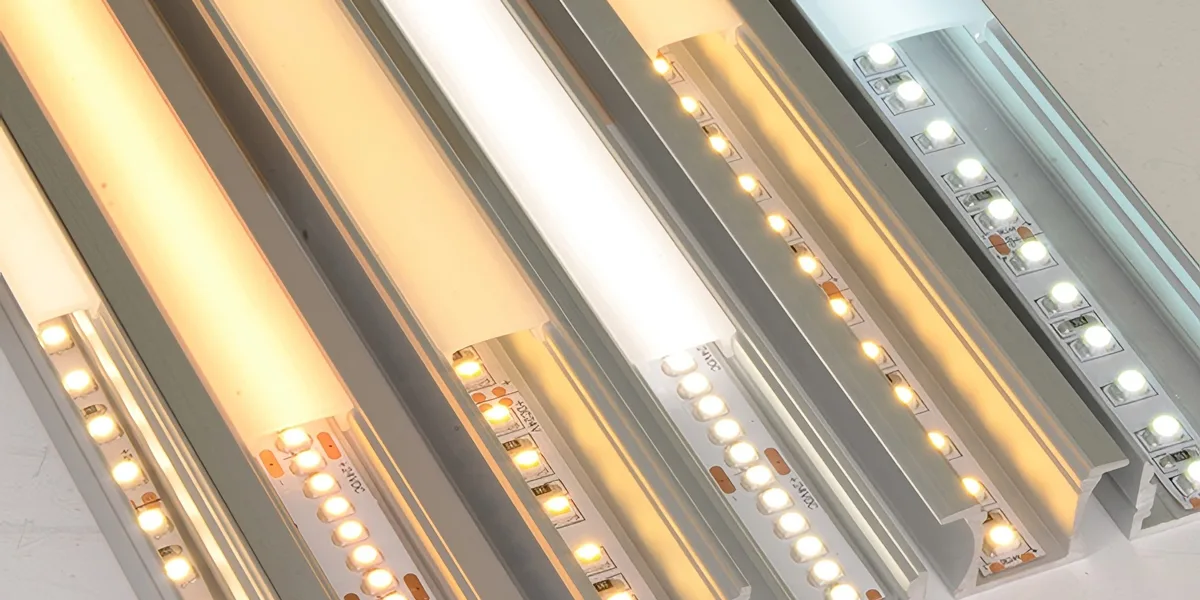
Aesthetic Lighting Design
Aesthetic design is more than choosing a “look”—it directly impacts light distribution, glare control, and perceived quality. The diffuser integrated into the aluminum profile determines both optical performance and visual comfort.
Common diffuser types and optical effects:
Clear (92–95% light transmission) – Delivers maximum brightness but leaves LED “hotspots” visible. Ideal for jewelry showcases, product displays, and task lighting where intensity is more important than uniformity.
Frosted (80–85% light transmission) – Offers balanced brightness and reduced glare. Suitable for office desks, retail shelving, and under-cabinet lighting.
Opal/Milky (65–75% light transmission) – Creates smooth, hotspot-free illumination with excellent glare control. Best for residential coves, hospitality spaces, and ambient lighting.
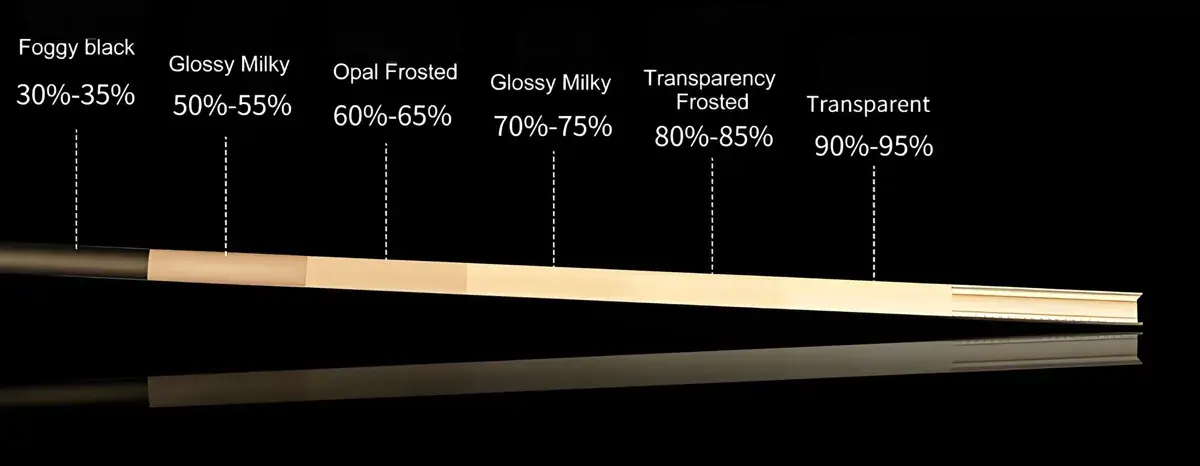
Tip: Longer distances between LED strip and diffuser (deep channels) improve uniformity, especially for lower LED densities (< 120 LEDs/m).
For examples of how diffuser choice shapes both function and mood, see our Guide to 45° Corner LED Aluminum Profile for LED Strips.
LED Aluminum Profile Selection Guide
Selecting the right aluminum profile requires matching thermal capacity, optical performance, and mechanical compatibility with the LED strip and installation site.
Key criteria:
LED Strip Wattage & Density – For ≥ 15 W/m or ≥ 120 LEDs/m, use deep or finned profiles with ≥ 2 mm wall thickness to maintain PCB temperature < 70 °C.
Profile Internal Width – Match internal slot width to LED strip PCB (e.g., 5 mm, 8 mm, 10 mm). Oversized channels may cause light spill; undersized channels risk damaging the strip or reducing contact for heat transfer.
Installation Environment – Outdoor or high-humidity areas require anodized or IP67-rated extrusions with UV-resistant polycarbonate diffusers.
Mounting Method –
- Surface-mounted: Best thermal conduction if fixed to metal; may require thermal tape on wood/plastic.
- Recessed: Requires precise cutouts (+1–2 mm tolerance); offers a flush look but may reduce airflow.
- Suspended: Modern aesthetic, but reduced heat conduction due to air isolation—select profiles with more surface area.
- 45° Corner: Optimized for shelf edges, under-cabinet, and angled accent lighting.

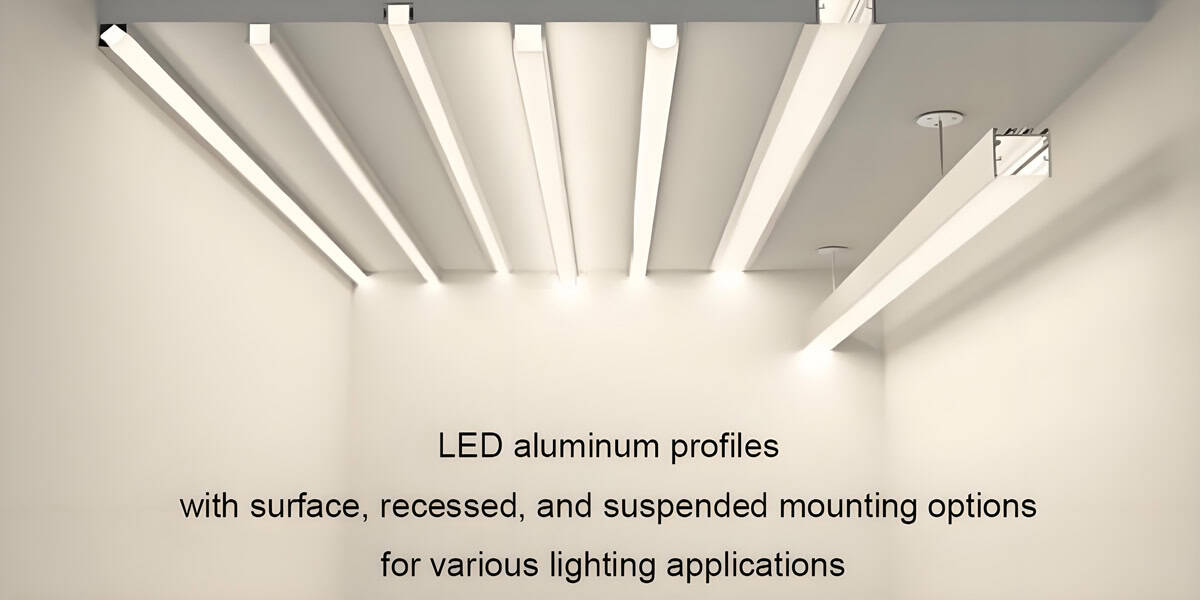
Economic Considerations – Upgrading from a standard profile to a finned model may increase cost by 20–30% but can extend LED lifespan by 30–40%, lowering replacement costs over a 5-year period.
For comprehensive profile specifications and application examples, see our Aluminum Profile for LED Strip Lighting.
Case Studies
The following cases demonstrate how selecting the right LED aluminum profile and diffuser can achieve both efficient heat dissipation and attractive lighting effects.
Case 1 – Retail Display Lighting with High-CRI LED Strip Profiles
A jewelry retailer installed 15 W/m CRI 95 LED strips in a 1 mm thin-wall aluminum channel with a clear diffuser. After 6 months, excessive heat (PCB > 78 °C) caused a Δu’v’ color shift of 0.004—noticeable to customers inspecting gemstones. The store upgraded to a 2mm wall, finned deep-channel profile in 6063-T5 aluminum, lowering PCB temperature by 7–8 °C and restoring accurate color rendering.
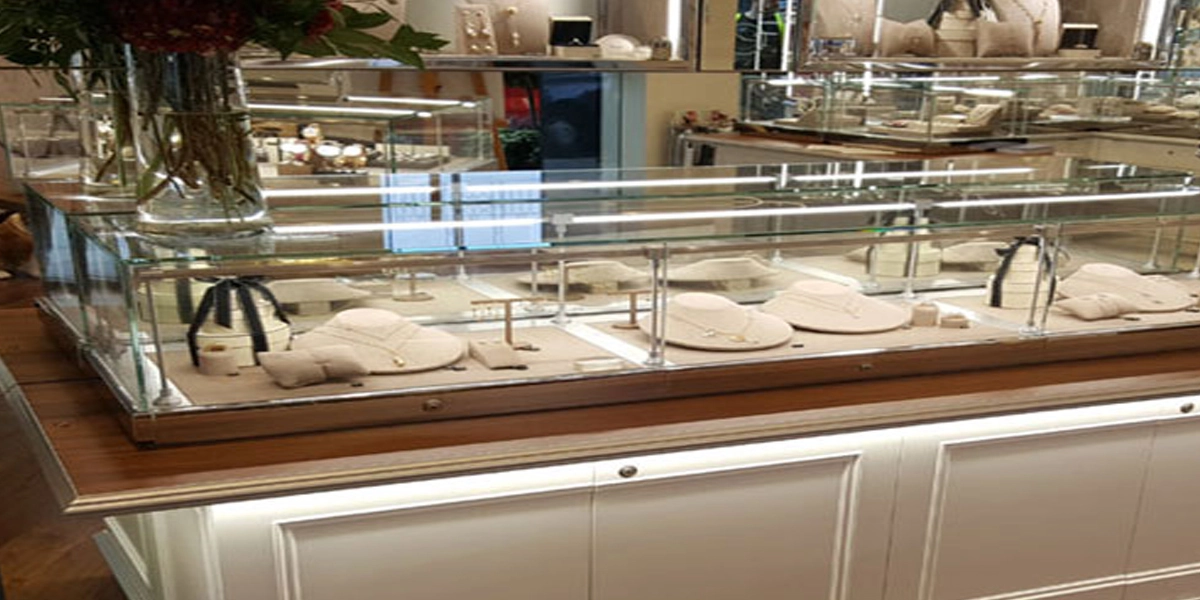
Case 2 – Office Cove Lighting Using Recessed LED Aluminum Profiles
An open-plan office used 9.6 W/m, 4000K LED strips in recessed profiles with frosted diffusers. The glare rating (UGR < 19) met workplace comfort standards, and PCB temperatures stayed below 55 °C for three years, with no visible lumen depreciation.

Case 3 – Residential Kitchen & Wardrobe with Diffused LED Channels
A homeowner installed 8 W/m LED strips in surface-mounted profiles under kitchen cabinets and inside wardrobe shelving. Choosing opal diffusers eliminated LED spotting and created uniform light. Profiles were fixed to aluminum backsplash panels, improving heat transfer and maintaining stable brightness in a warm, enclosed space.
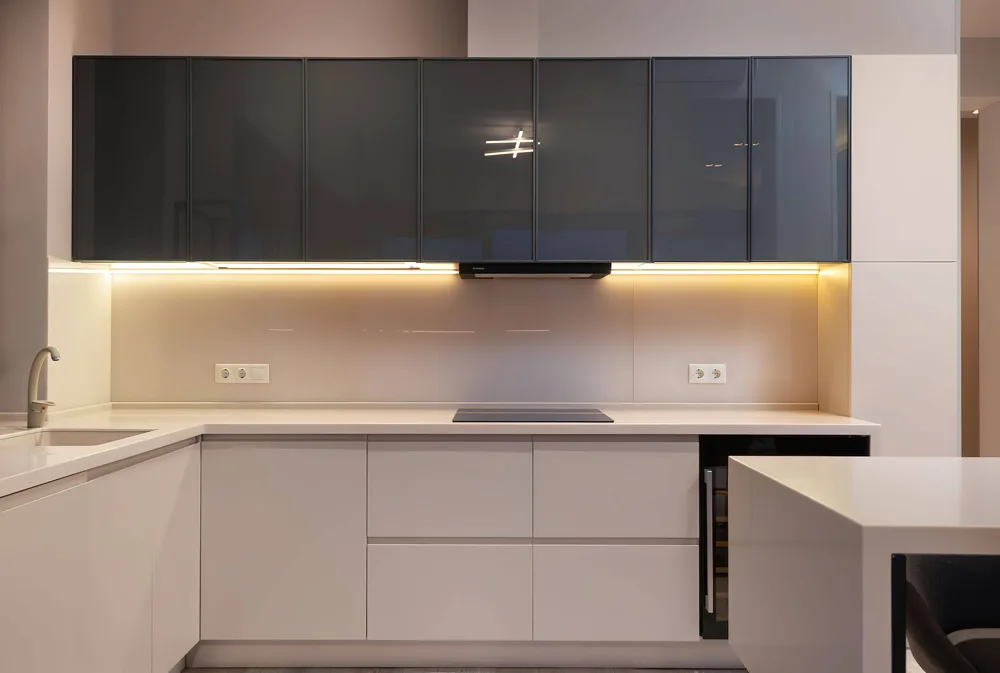
Case 4 – Outdoor Facade Lighting in Tropical Climates with IP67 Profiles
An architectural facade in Southeast Asia ran IP67-rated 12 W/m LED strips in anodized, UV-resistant aluminum profiles with opal diffusers. Despite ambient temperatures exceeding 35 °C, the setup maintained PCB temperatures below 70 °C, preventing premature failure. For facade-specific profile selection, see our Ultimate Guide on Aluminum Profile for LED Strip Lighting.

Conclusion
Aluminum profiles are not just mounting accessories—they are thermal management systems, optical shapers, and design enhancers in one. Choosing the right extrusion for your LED strip wattage, installation environment, and light quality requirements can mean the difference between a 2-year failure and a 50,000-hour service life.
The right selection improves:
Thermal stability – Keeps junction temperatures in the safe range.
Light quality – Controls glare, diffusion, and uniformity.
Durability – Protects against dust, moisture, and mechanical impact.
Economic efficiency – Reduces replacement and maintenance costs over time.
Whether you need a finned deep-channel for high-power retail lighting, a corner profile for display cabinets, or an IP67-rated extrusion for outdoor facades, our engineering team can help you select the most effective solution.
Get a tailored aluminum profile recommendation for your LED project today – Contact SignliteLED or explore our Aluminum Profile for LED Strip Lighting range.
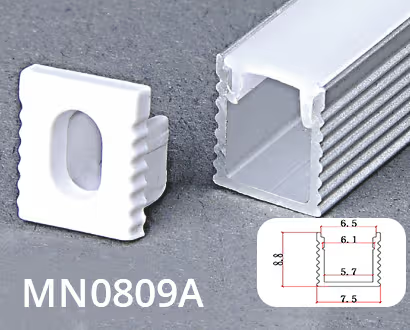
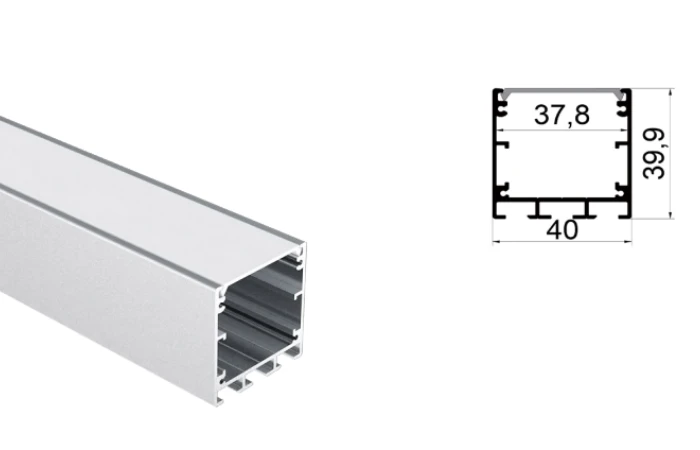
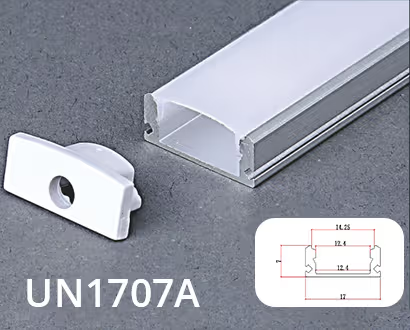
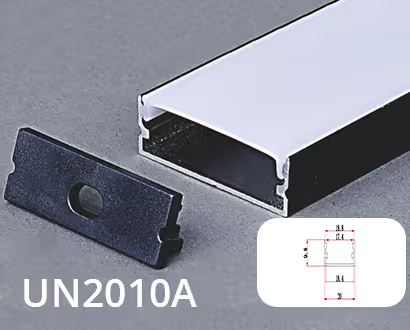
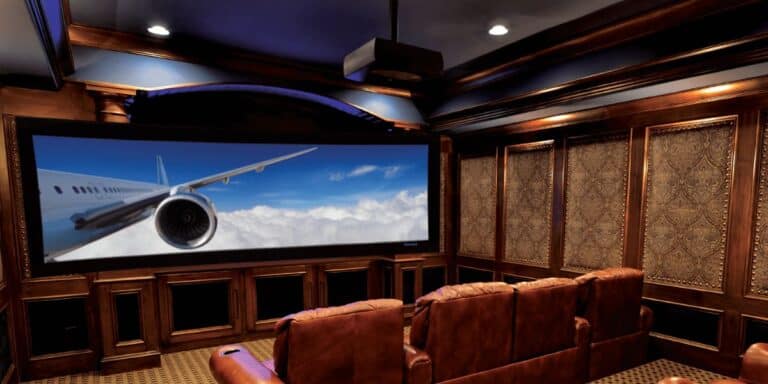

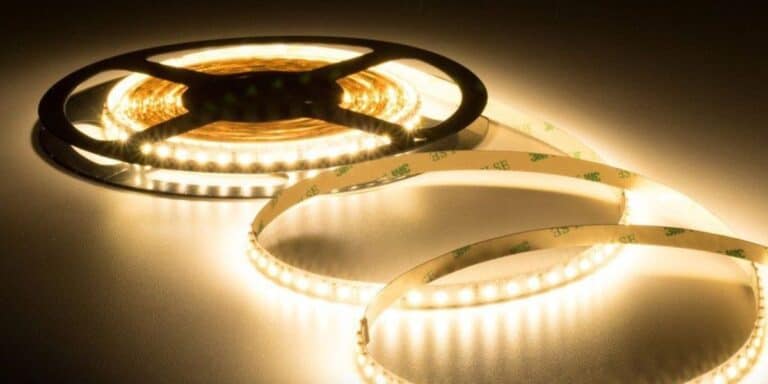
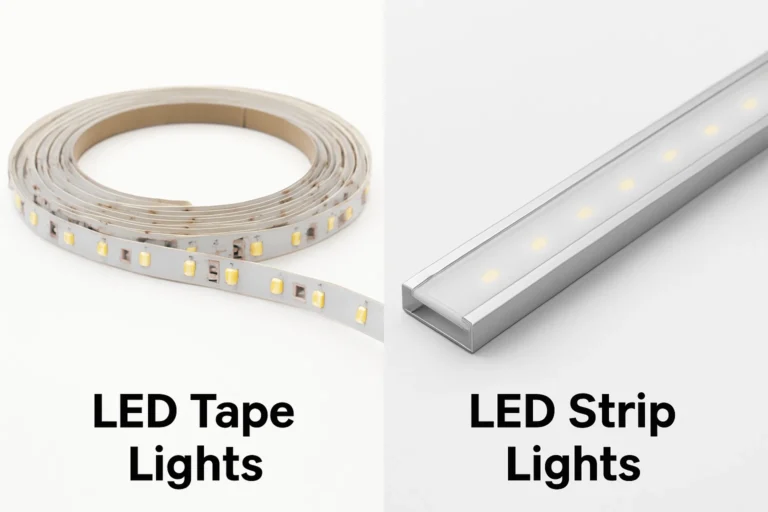
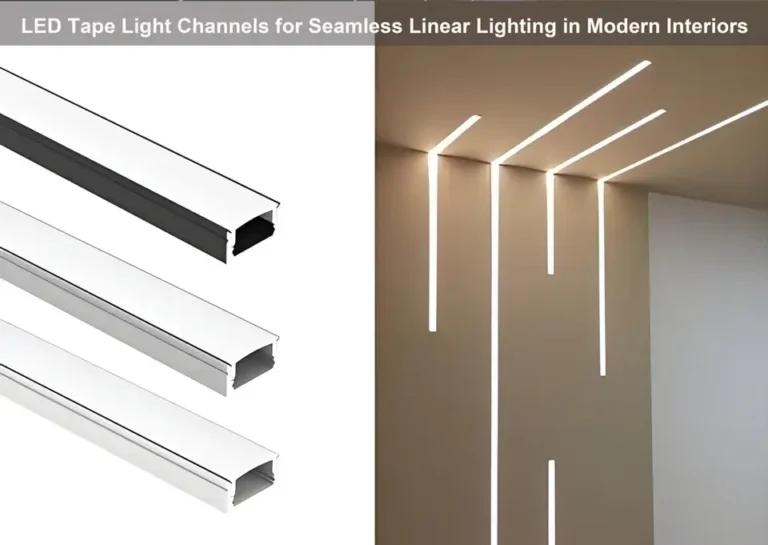
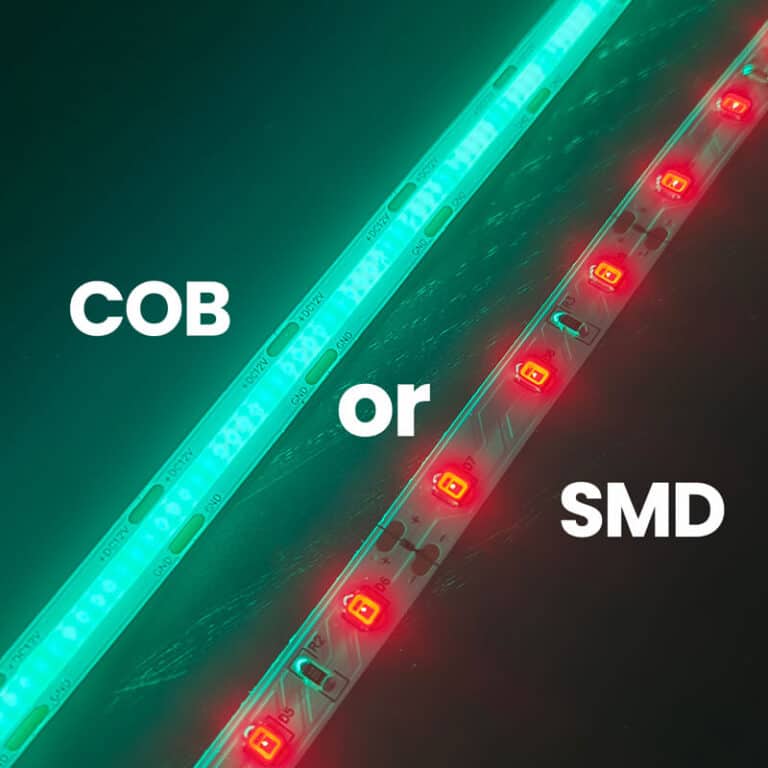

I loved as much as youll receive carried out right here The sketch is attractive your authored material stylish nonetheless you command get bought an nervousness over that you wish be delivering the following unwell unquestionably come more formerly again as exactly the same nearly a lot often inside case you shield this hike
Somebody essentially help to make significantly articles Id state This is the first time I frequented your web page and up to now I surprised with the research you made to make this actual post incredible Fantastic job